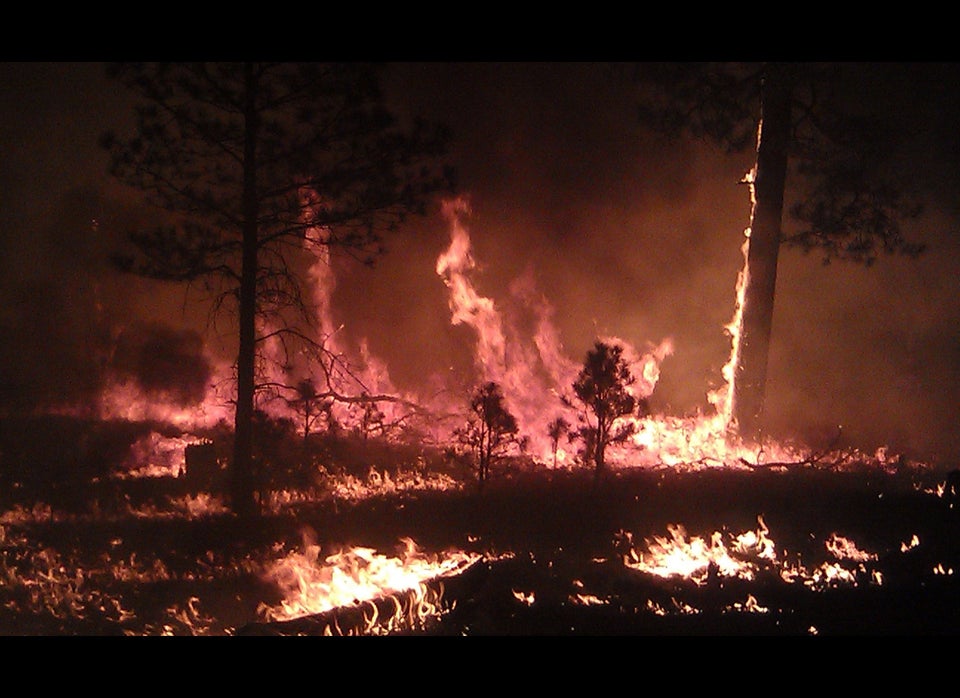
By Laura Zuckerman
SALMON, Idaho, Aug 15 (Reuters) - A massive wildfire raging in the Idaho mountains crept ever closer to a pair of nearly deserted resort towns on Thursday, with firefighters bracing for soaring temperatures and high winds that could complicate their work, federal fire managers said.
The so-called Elk Complex Fire, which has been nipping at the edges of the south central Idaho communities of Pine and Featherville for days, has already devoured 38 homes and 43 other structures outside the city limits since it was sparked by lightning a week ago.
"We have very high temperatures, low humidity and the wind is erratic. It will make the fire behavior today unpredictable and let it move much faster on the ground," said Lisa Keibler, a federal fire information officer.
The bulk of houses destroyed by the 117,000-acre blaze were in a development near Pine, where Idaho Governor C.L. "Butch" Otter has a getaway cabin. The fire was 25 percent contained on Thursday.
Most of the roughly 1,000 seasonal residents of the area, prized for a mountain lake that draws summer tourists for fishing, boating and water skiing, have obeyed evacuation orders.
The fire comes as federal fire managers and veteran firefighters battling dozens of destructive blazes in Western states are reporting conditions complicated by years of drought, higher than usual temperatures and fierce winds.
The wildfire is the second in as many years to menace a resort area framed by the Boise National Forest about 70 miles east of the state capital. But the blaze is standing out for its breakneck pace and rapid destruction of decades-old pines and spruces.
Elsewhere in Idaho, authorities ordered the evacuation of 20 homes near Sun Valley, an international ski destination, as a 44,000-acre wildfire in the Sawtooth National Forest roared toward housing developments between the tourist communities of Hailey and Ketchum.
Blaine County Sheriff Gene Ramsey and his officers went door to door Wednesday night in the same area to warn occupants of a dozen homes to leave without delay. People in 200 homes in an affluent development between the two towns have been told to prepare to leave at a moment's notice, he said.
"It's unpredictable," Ramsey said of the so-called Beaver Creek Fire. "In places where we expected it to crawl, it grew legs and ran."
Michael Jenkins, professor of wildland fire science at Utah State University, said if a warming trend in the U.S. West holds, it would mean more of the same for future fire seasons.
"Drought is one of the biggest predictors of the severity of a fire season," he said. "When you get successive years of drought, trees and shrubs become drier and cause a fire to burn more intensely."
In Utah, evacuation orders remained in place Thursday afternoon for as many as 400 homes on the outskirts of Park City, where a fast-moving blaze that broke out Tuesday burned 14 upscale houses. (Editing by Cynthia Johnston and Richard Chang)

